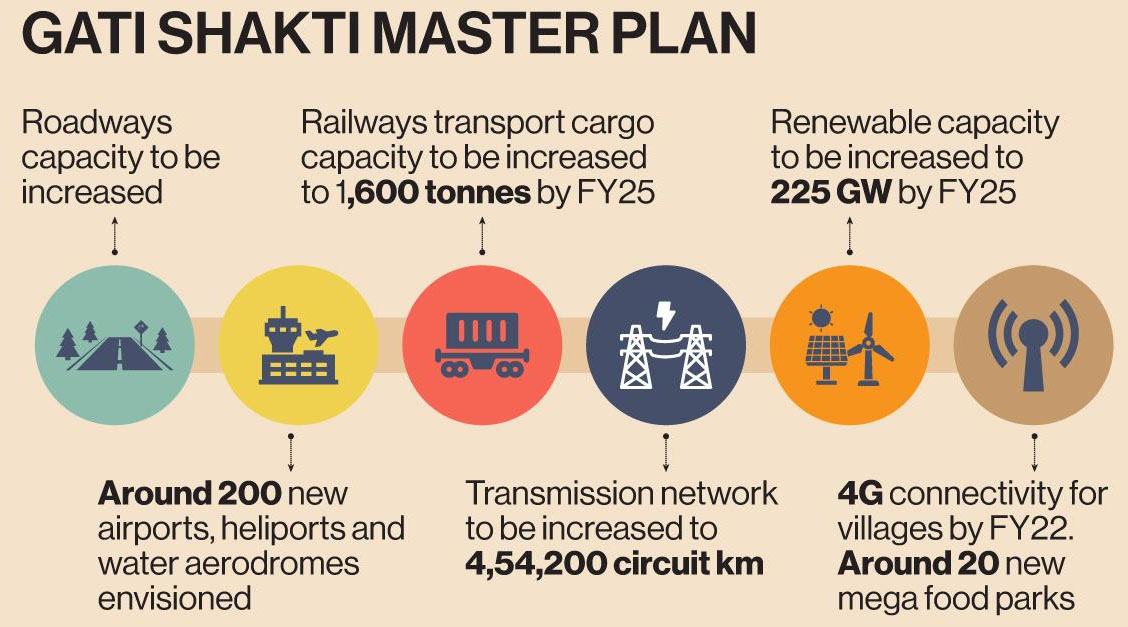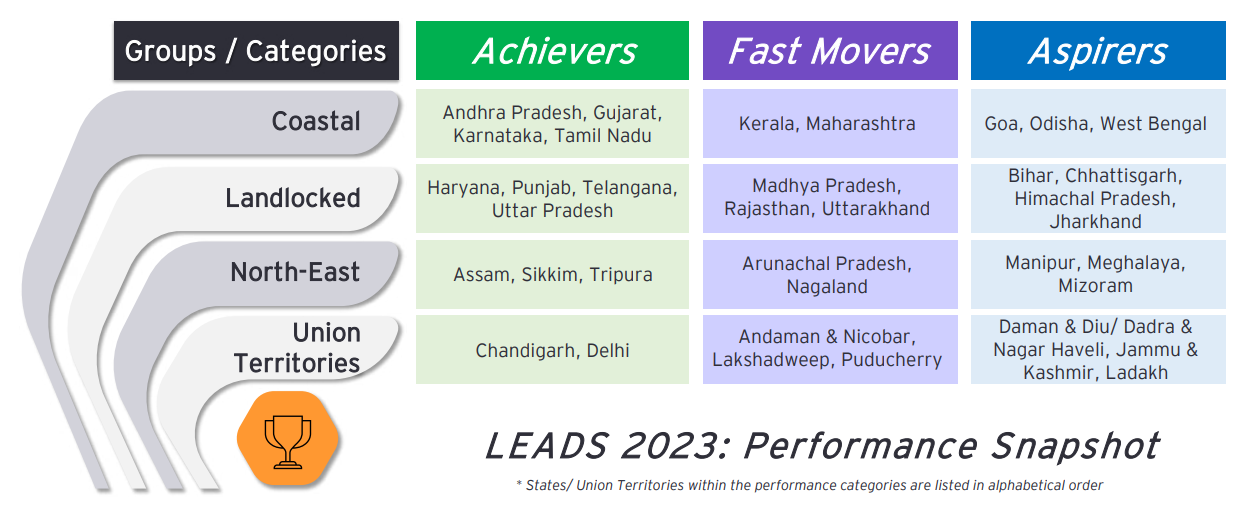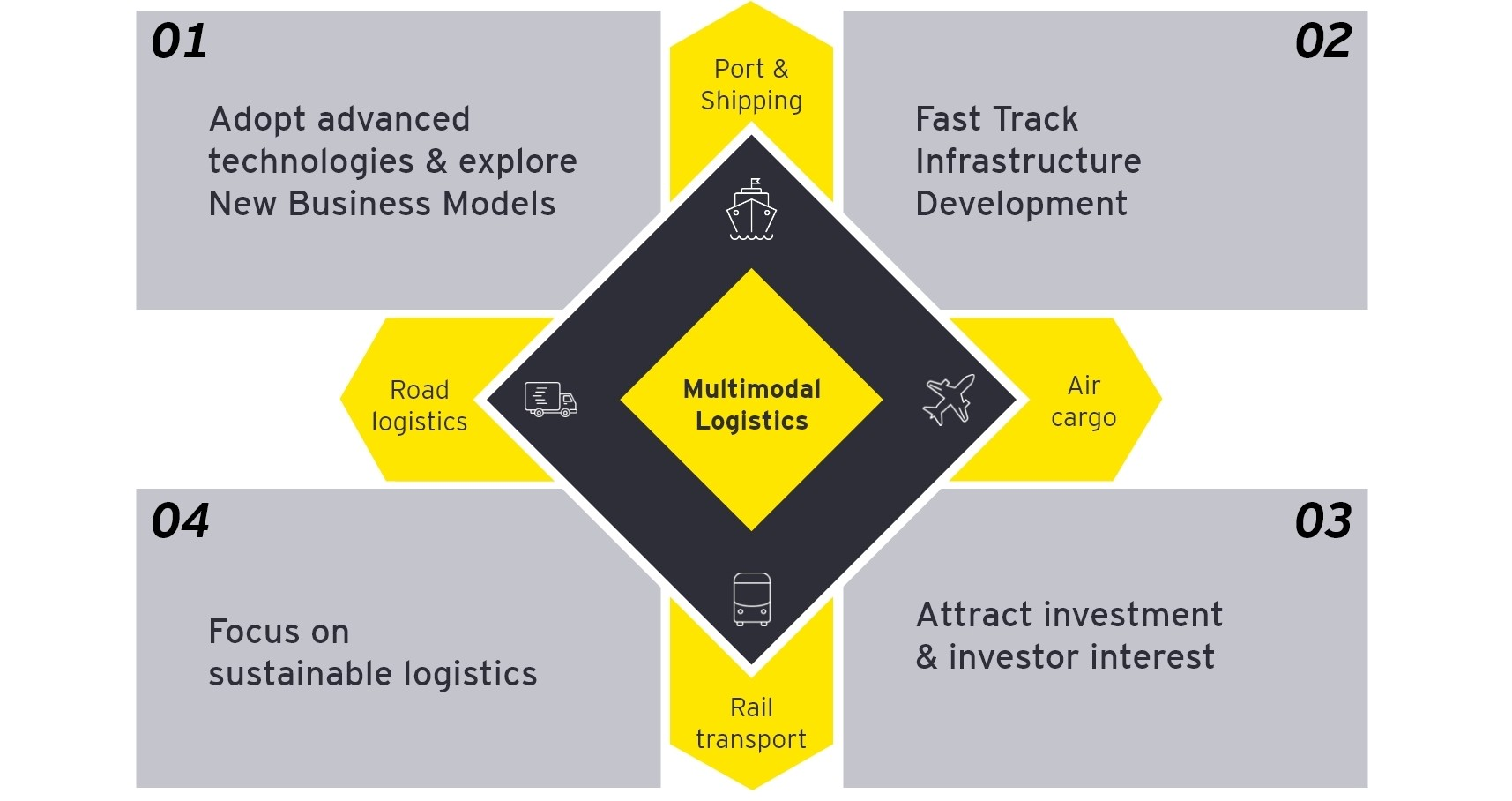Assessing India's Logistics Landscape | 12 Jan 2024
This editorial is based on “A Plan to Measure” which was published in Indian Express on 11/01/2024. The article explores various facets of the logistics sector, with a focus on both India and the global context, while proposing recommendations for necessary reforms.
For Prelims: Logistics Ease Across Different States (LEADS) survey, PM Gati Shakti Scheme, Multi Modal Logistics Parks, LEADS Report, Dedicated Freight Corridor, Sagarmala Projects, Bharatmala Project, Logistics Performance Index (LPI).
For Mains: The challenges concerning planning and resource mobilization in the Indian economy are intricately linked to issues within the logistics sector.
India's logistics sector has undergone significant scrutiny and development in recent years. Tracked through metrics such as the Logistics Performance Index (LPI), India has shown improvement, rising to the 38th position out of 139 countries in 2023 from its 54th ranking in 2014.
Logistics involves the organization, coordination, storage, and transportation of various resources, including people, raw materials, inventory, and equipment, between different locations such as production points, consumption areas, distribution centers, or other production sites.
What is the Logistics Performance Index (LPI)?
- About:
- The LPI is an interactive benchmarking tool developed by the World Bank Group. It measures the ease of establishing reliable supply chain connections and the structural factors that make it possible.
- It helps countries identify the challenges and opportunities they face in their performance of trade logistics and what they can do to improve their performance.
- Parameters:
- The LPI considers 6 parameters to evaluate logistics performance, namely:
- Customs performance
- Infrastructure quality
- Ease of arranging shipments
- Logistics services quality
- Consignment tracking and tracing
- Timeliness of shipments
- The LPI was reported every two years from 2010 to 2018 with a break in 2020 due to the Covid-19 pandemic and a restructuring of the index methodology eventually came out in 2023.
- LPI 2023 allows for comparison across 139 countries and for the first time, LPI 2023 measures the speed of trade with indicators derived from big datasets tracking shipments.
- The LPI considers 6 parameters to evaluate logistics performance, namely:
What has Led to India’s Improved Performance in LPI Rankings?
- PM Gati Shakti Initiative:
- In 2021, the Indian government unveiled the PM Gati Shakti initiative, a comprehensive National Master Plan for multimodal connectivity. The primary objective is to reduce logistics costs and stimulate economic growth by 2024-25.
- National Logistics Policy 2022:
- Complementing the Gati Shakti Initiative, the National Logistics Policy (NLP), launched in 2022 focuses on ensuring swift last-mile delivery, resolving transport-related challenges, saving time and costs for the manufacturing sector, and enhancing overall efficiency in the logistics sector.
- It targets a reduction in logistics costs to global benchmarks, attaining a top 25 LPI ranking.
- Complementing the Gati Shakti Initiative, the National Logistics Policy (NLP), launched in 2022 focuses on ensuring swift last-mile delivery, resolving transport-related challenges, saving time and costs for the manufacturing sector, and enhancing overall efficiency in the logistics sector.
- Infrastructure Development and International Shipments:
- The LPI report reveals a noteworthy advancement in India's infrastructure score, moving up five places from 52nd in 2018 to 47th in 2023.
- Government investments in both soft and hard trade-related infrastructure, connecting port gateways on both coasts to major economic centers in the interior, have contributed to improvements in international shipments.
- Role of Technology in Logistics Improvement:
- Technology plays a pivotal role in India's ongoing efforts to enhance logistics performance. Through a public-private partnership, the government has implemented a supply chain visibility platform.
- The introduction of radio frequency identification tags by NICDC Logistics Data Services Limited enables end-to-end tracking of the supply chain, resulting in substantial reductions in delays.
- The report suggests that emerging economies like India are leapfrogging advanced countries due to modernization and digitalization.
- Dwell Time Improvement:
- Dwell time, representing the duration a vessel or cargo spends at a specific port or terminal, showcases India's logistics performance improvement.
- The country boasts a very low dwell time of 2.6 days. Notably, the average dwell time for containers in India and Singapore between May and October 2022 was three days.
- It surpassed industrialized countries like the US (7 days) and Germany (10 days).
What are the Issues with India’s Logistics System?
- Logistics Cost in India:
- The Economic Survey 2022-23 indicates that logistics costs in India range from 14-18% of GDP, higher than the global benchmark of 8%.
- Previous reports from 2018 and 2020 highlight variations in logistics costs across ports and estimate the overall logistics costs in the Indian supply chain to be around USD 400 billion, equivalent to 14% of GDP.
- Methodological Challenges in Estimating Logistics Costs:
- Methodological challenges exist in estimating logistics costs, particularly as percentages of GDP.
- The Dun and Bradstreet methodology calculates the cost of doing business as a percentage of the consignment value, while other reports cite logistics costs as percentages of GDP without clear explanations, leading to variations in the figures.
- NCAER Report on Logistics Costs and Methodology for Estimation:
- A December 2023 NCAER report on logistics costs in India provides a precise methodology for estimation.
- The report cites various estimates by private sector and academic institutions, revealing variations.
- According to the NCAER report, logistics costs in 2021-22 were estimated between 7.8% and 8.9%, indicating a decline over time, with a transient increase in 2017-18 and 2018-19.
- Methodological challenges exist in estimating logistics costs, particularly as percentages of GDP.
- Skewed Modal Mix:
- The modal mix in India's freight movement is heavily skewed towards road transport, with 65% of freight being moved by road. This has led to increased congestion, pollution, and logistics cost escalation on roads.
- Loss of Rail Freight Share:
- Despite being a more cost-effective mode of transportation, railways have been losing freight share to more flexible modes, due to the convenience of road transport.
- The Indian Railways face infrastructural challenges such as the lack of necessary terminal infrastructure, maintenance of good sheds and warehouses, and uncertain supply of wagons, absence of all-weather roads as a substantial part of the country is out of reach for railways.
- Despite being a more cost-effective mode of transportation, railways have been losing freight share to more flexible modes, due to the convenience of road transport.
- Warehousing & Taxation Discrepancies:
- Logistics companies generally opt for warehousing because it enables them to store goods and move them closer to the customer when demand occurs. It helps to reduce the transit time.
How do the States in India Stand in the Logistics Sector?
- State-Driven Logistics:
- Logistics are influenced by states, and the Ministry of Commerce & Industry’s Logistics Ease Across Different States (LEADS) report categorizes states into achievers, fast movers, and aspirers based on perceptions.
- Coastal states, responsible for 75% of export cargo, show variations in performance, with Andhra Pradesh, Gujarat, Karnataka, and Tamil Nadu excelling, while Goa, Odisha, and West Bengal lag.
- Logistics are influenced by states, and the Ministry of Commerce & Industry’s Logistics Ease Across Different States (LEADS) report categorizes states into achievers, fast movers, and aspirers based on perceptions.
- State-Level Logistics Policies:
- Most states, including Goa and Odisha, have state-level logistics policies. However, West Bengal, positioned at the bottom among coastal states, lacks a logistics policy.
- The LEADS 2023 report suggests that West Bengal could benefit from formulating a State Logistics Master Plan and State Logistics Policy to enhance efficiency and attract investments in the sector.
- Most states, including Goa and Odisha, have state-level logistics policies. However, West Bengal, positioned at the bottom among coastal states, lacks a logistics policy.
- Performance Disparities Among States:
- While India's overall logistics performance has improved over time, individual states exhibit disparities.
- Some states have slipped in performance, emphasizing the need for ongoing efforts to enhance logistics efficiency at the state level.
- LEADS 2023 Report and State Categorization:
- The LEADS 2023 report categorizes states into coastal, landlocked, north-east, and Union Territories, providing a nuanced view of logistics performance.
- States categorized as fast movers represent those with average performance, highlighting the importance of nomenclature in acknowledging different levels of achievement.
What Can be the Way Forward to Improve the Logistics Sector in India?
- Adopting Advanced Technologies:
- The recent disruptions in the supply chain and growing concerns about sustainability have led to an increased global-level adoption of technology-enabled solutions such as blockchain, big data, cloud computing, and digital twins.
- While the level of adoption is relatively low in India, the government has launched several digital solutions, such as ICEGATE and E-Logs, which have reduced inefficiencies, improved transparency, and made goods movement faster.
- The recent disruptions in the supply chain and growing concerns about sustainability have led to an increased global-level adoption of technology-enabled solutions such as blockchain, big data, cloud computing, and digital twins.
- Focus on Sustainable Logistics:
- India's shipping and logistics sector is gradually aligning with domestic and global regulations on sustainable practices as well but more needs to be done.
- The sector needs to conform with leading global benchmarks such as Energy Efficiency Existing Ship Index, Carbon Intensity Rating, and Emissions Trading System.
- India's shipping and logistics sector is gradually aligning with domestic and global regulations on sustainable practices as well but more needs to be done.
- Attracting Investments and Investor Interest:
- The Indian government has been the chief proponent and financier of infrastructure development. But more needs to be done to involve the private sector.
- The National Infrastructure Pipeline (NIP) is one such lever that is expected to raise INR 50 lakh crore (approximately US$650 billion) worth of investment.
- Although 100% FDI is allowed in most transport infrastructure development initiatives, considerable effort will be needed to bring about the desired impact.
- The Indian government has been the chief proponent and financier of infrastructure development. But more needs to be done to involve the private sector.
Conclusion
The logistics sector in India is poised for growth, and the government’s initiatives and policies are aimed at creating a conducive environment for the sector to thrive. The advent of online commerce has created a paradigm shift in logistics models with newer opportunities including on-demand, last mile, middle mile, and hyperlocal delivery models. The sector is expected to continue to evolve and adapt to changing market dynamics, and technological advancements will play a crucial role in shaping its future.
|
Drishti Mains Question: Analyze the significance of the National Logistics Policy 2022 in India. What are the key building blocks of the policy, and how do they aim to achieve the policy’s goals? |
UPSC Civil Services Examination Previous Year Question (PYQ)
Q. The Gati-Shakti Yojana needs meticulous coordination between the government and the private sector to achieve the goal of connectivity. Discuss. (2022)



